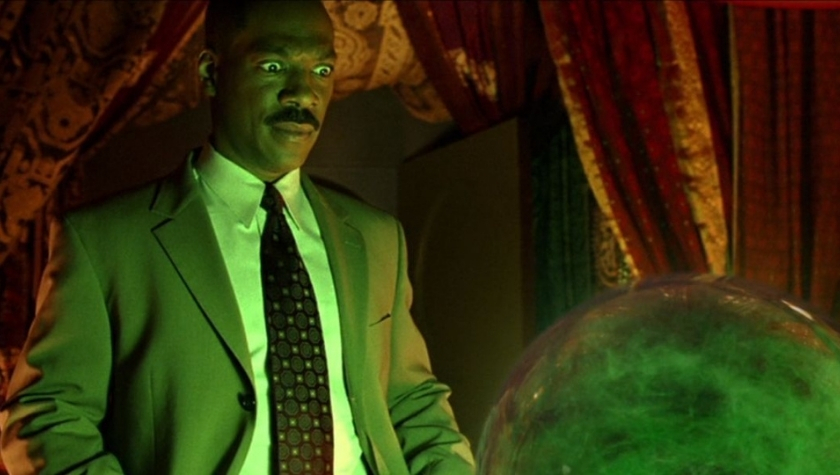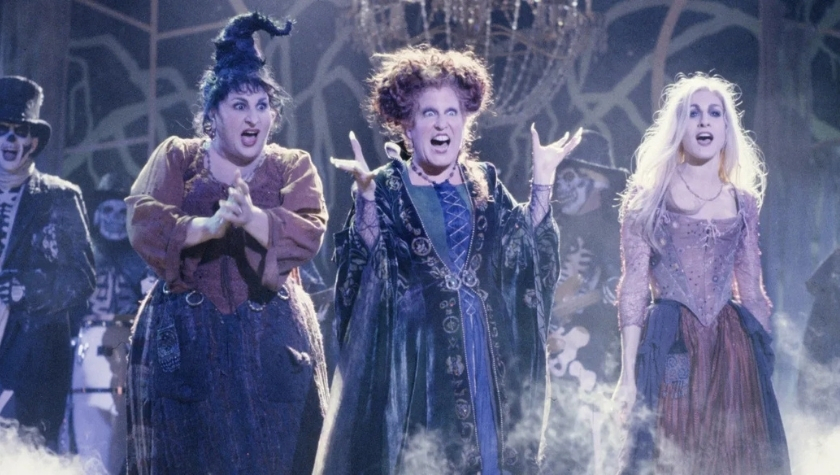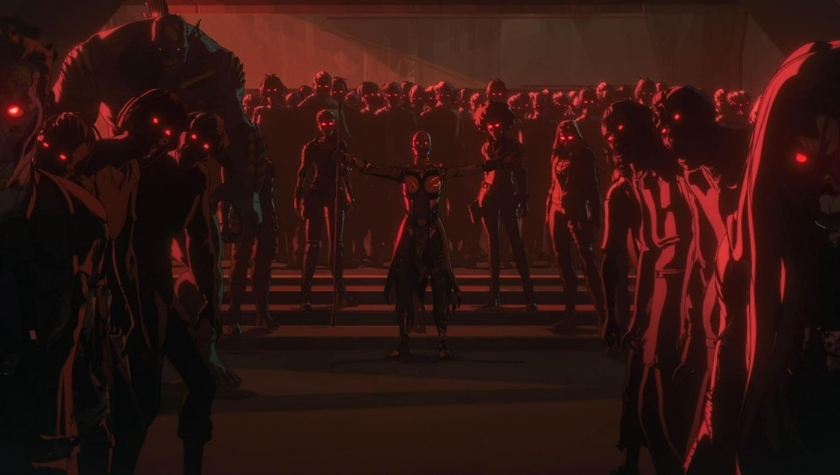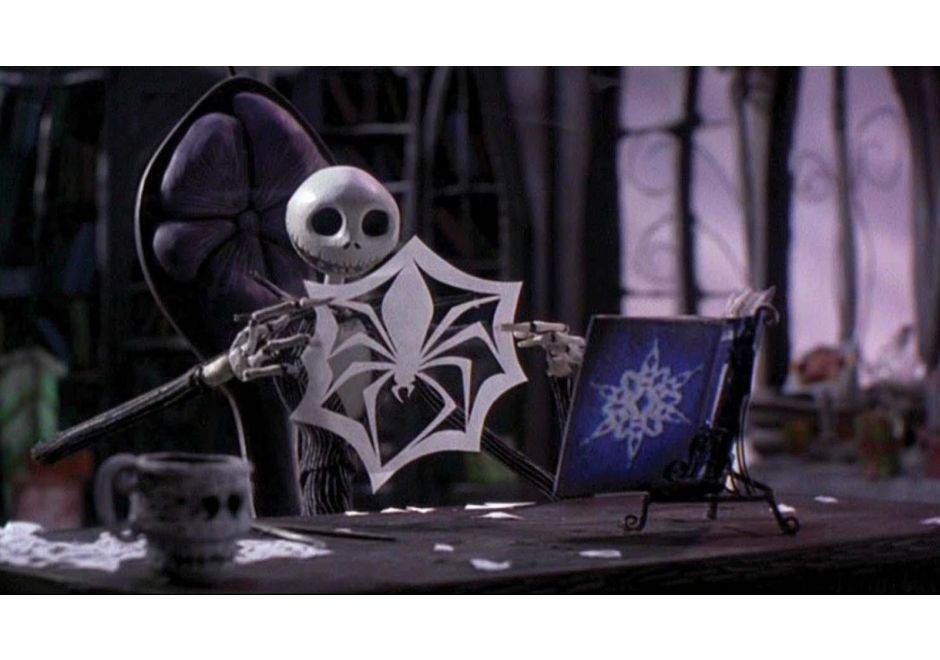Some of us love Halloween and a good scare - especially when it’s served with a dose of humor. Think Practical Magic (yes, there’s a sequel!), Hocus Pocus 2, and Hotel Transylvania.
Even Hallmark has embraced the spooky season, adding Halloween-themed rom-coms to its lineup. Halloween movies offer families a chance to come together for a themed escape, enjoy a bit of nostalgia, and bond over their shared love of October 31st - along with all its thrills and chills.
So, what makes a Halloween movie truly family-friendly? Here are our top five tips for crafting a frightfully fun script.
1. Tricks (and treats) are essential to a Halloween plot
So what is it that makes the family friendly Halloween film timeless? Think tone, atmosphere, and theme. It comes down to the unique blend of elements (different than tropes!) that evoke the Halloween spirit:
- A dash of spookiness. Disney’s Haunted Mansion nails it with a blend of mystery, ghostly hauntings, and—
- Humor! Infusing your Halloween-inspired script with levity can elevate your story by giving audiences, especially the younger ones, a necessary breather between “scares”. Laughing it off balances those darker moments, if used at the opportune time. Winifred in Hocus Pocus is positively frightening to a small child. And that’s why we have Mary and Sarah! Don’t underestimate the power of a well-timed joke or character trait.
- A pinch of heartwarming tales that tug the heart strings. Examining themes like coming-of-age, friendship, and family values. Who doesn’t remember being a teen as a scary time?
- Mystery over horror. The unknown can be more frightening than gore and jump scares combined! So while those two can probably be kept to a minimum for a PG family rating, laying out a mystery in a Halloween story plays well into the mythos of the holiday. Adding a supernatural layer to the mystery? Even spookier.


2. Writing to your audience
While nothing beats a Halloween classic like A Nightmare on Elm Street, It, or Scream, they may not be suitable to all audiences (or stomachs!). When writing for family audiences, you’ll need to keep the hard and fast ratings in mind, which will be based on things like themes, language, nudity, and violence. Because let’s face it, the horror genre uses all of those to its utmost advantage for shock and awe. So how can you balance those elements with a Halloween theme, while keeping it fun and appropriate for all ages?
Yes, we’re writing for scares, but sometimes to make those pop, adding some humor helps. Keeping the family-friendly-while-still-enjoyable-for-all-age-groups balance means writing jokes that appeal to both children and adults (because the parents are the ones usually watching with their kids).
It should also be noted that a family-friendly script lacks profanity, has only mild violence, no drug use, and the mildest of (non-sexual only) nudity allowed. PG-13 offers a little more leeway in all these categories, but for simplicity’s sake and to reach the broadest audience possible, PG is your ticket. See here for a complete rundown of the Motion Picture Association film rating system.
3. Archetypal Halloween tropes and character types
As the screenwriter, you’re in the driver’s seat - free to choose the tropes that best fit your family-friendly Halloween story. But why use tropes at all? There are two good reasons. First, certain characters, paranormal twists, and ghostly delights just scream Halloween, so why not use them to your advantage and set the scene?
Second, it all comes down to the marketing pitch you’ll need later. Think of it this way: who isn’t waiting for a Casper-meets-Wednesday style monster mash-up? Knowing your comps (comparable titles) not only helps shape your story but also gives it a stronger foundation when it’s time to sell.
As you brainstorm your Halloween screenplay, think about which classic character archetypes fit the spooky season but can also be made family-friendly. Blend those with familiar tropes (presented in a fresh, creative way, of course!) and voilà! You’ve set your story on a family-friendly path down the witches’ road.
Here are a few to get you started:
Halloween Character Shortlist:
- Witches, warlocks and wizards
- Vampires
- Werewolves
- Ghosts and ghouls
- The Undead
- The Possessed, outcast or forgotten (like the oddballs found in Beetlejuice, The Addams Family, and Scooby-Doo.)
Horror Film Tropes:
- The scary setting: haunted mansion, enchanted woods, graveyard, trick-or-treating.
- Iconography: jack-o-lanterns, black cats and bats, full moons, cobwebs and candles, Gothic anything.
- Jump scares: But make them friendly! Someone hiding in the closet - but it’s a younger sibling, long walks down dark hallways - but it’s to a surprise party, skeletons popping out of a graveyard - but they become the hero’s helper.
As you can see, there’s no need to re-invent the wheel! There’s a reason why these traits and tropes are symbolic of Halloween. The added familiarity also softens the scares; if we know what to expect, we aren’t as afraid of it. Once you’ve laid the familiar foundation with some of these creative kick-starters, mix and match. Then see how you can infuse humor to take the horror down a notch while upping the fun factor. Think: gross not gore, misunderstandings, and puns—you want your seven-year-old as much as your 47-year-old to have a good laugh.


4. Create something new
It’s smart to have a sense of where your Halloween film fits in the market, especially when it comes time to pitch. But remember, Hollywood (and audiences!) are always on the lookout for something fresh and original.
Sure, Dracula is getting its 80th plus release (no joke, check out this nifty countdown listing all of Dracula’s incarnations) and Frankenstein is back in the zeitgeist. Again. But remember The Nightmare Before Christmas? It never went away. And not just because of Disney’s genius marketing techniques - because it captured everyone’s cold, dark hearts. It had thrills and chills along with a love story, it had quirky characters and childish delights, as well as more adult themes like existentialism and political satire.
While creating something audiences haven’t seen before holds true for all genres, when it comes to horror fans, the element of surprise is essential. This doesn’t have to be a jump scare, it can be as friendly as the unexpected; Dracula first helping Johnny by disguising him as a monster in Hotel Transylvania, and the third act change of heart that sets off Dracula’s adventure into the human world.
In Hocus Pocus, we’ve got children-eating witches. That should be hella scary! Instead, our witches operate in misunderstandings, puns, and dissolve into glitter when they die rather than blood, guts and gore. Definitely palatable for younger audiences, while the mom’s Madonna costume and Sanderson Sisters’ scene with “The Master” might go right over their heads.
5. Make it animated
Take a page from Marvel’s playbook (hello, Avengers meets zombies, just in time for Halloween?!) Not exactly a movie, but a great example of taking familiar IP and Halloween-inspired tropes and expanding them in unlimited ways.
Take a moment to consider the storytelling possibilities that animation offers. Writing an animated Halloween flick gives a screenwriter far more flexibility in the realms of fantasy (thanks to budget). There’s nothing you can’t animate. Creating that from physical scratch? That’s another story (literally). Think: Hotel Transylvania and The Nightmare Before Christmas. While possible, those would be really expensive to shoot in live action.
There’s also something about animation that takes the reality right out of a situation - a built-in way to remove a layer of fear that could otherwise be downright terrifying, making it more palatable for all audiences.


Family-friendly Halloween movies have a unique ability to bridge the generational gap while celebrating the spooky season. They conjure nostalgia and create shared experiences that bond audiences. Give them relatable - and therefore unforgettable - characters to go on a Halloween adventure with, exploring universal themes, and you’re well on your way to writing your own Halloween classic.

